Ecology of the Kajh-Tai Region
As explored by Field Lead of the 1st Adventine Expedition to Ka-Tai: Dana Chou
Framed within the harsh deserts and jagged corralum peaks, the life of Kajh-Tai eeks out its existence with no intention of relenting. While the surface appears windswept and inhospitable, a rich and hardy ecology thrives below the crusted dirt and coral.
The corralum caves below slosh with water, fueling the life above. The natural patterns of Jhoutai create an always-ebbing tide of life, death, and rebirth.
The deserts, corralums, and deep chasms of the Kajh-Tai region have molded a rugged, exotic, and alien ecosystem, even when compared to the rest of Jhoutai.
Arrival
The following occurs circa 19555 ES and 2208 GS, about 1000 years ago relative to the modern point of Ethnis. This is part of the Adventine Expeditions, when Earth and Jhoutai first made contact and allowed scientists and diplomats to visit one another's worlds.
Each day of the expedition felt more real and surreal than the last. It had been a journey of departures--first from Seattle, and then from Earth--each time bringing her closer to stepping foot on Jhoutai, and later into its wilderness. With each leg of their journey, Dana felt like she was shedding assumptions and presuppositions, leaving only raw wonder and the urge to explore.
The pace of it was slowly driving her restless. Only her closest assistants recognized it--years of navigating academic politics had left her with a stony poker face, and she prided herself on being a consummate professional.
Another two weeks passed within the subterranean campus of the University of Yak’koli. Dana and her team, an assortment of natural scientists from all over Earth, were quarantined, vaccinated, and then introduced (through glass partitions and speakers) to the local team responsible for supporting their mission: provisioners, handlers, translators, cavers, comms specialists, and exterminators. They reviewed their plans, tested their equipment, and read reports on the various species they might encounter in the wilderness.
Dana's primary conversations were with an Aempian named Kelma, who was as unfamiliar with Yak’koli as Dana and her team were. Kelma preferred to linger on the other side of the conversational partition for the better part of her days, reading research papers alongside Dana and helping her make sense of any confusing entries or bad translations. When at last the humans were freed from quarantine, Dana and Kelma shook hands at last.
“I’m looking forward to getting started,” she said.

Sophont: FirstHeart
The chief ecological oversight for the land restoration of the Cascadian Union, which is turning into swamps, deserts, and salty inland sea thanks to the ravages of climate change.

Sophont: Aen
A biologist and field team manager from Aempis, the country spearheading first contact with Earth. Her job is to monitor and replicate all the data which Dana's team takes home.

Sophont: Kajh
An ecologist native to the host city of Yak'koli, Gar'rig specializes in Jhoutaioan Coral, and has been assigned to the expedition to provide a local perspective.
Surface
After those weeks of preparation, Dana and her team finally set out on their expedition across Kahj-Tai’s desert. They traveled via airship, soaring out over the massive cliffs of Yak'koli and riding the updraft out over the desert to a Meyfar farm a few kilometers to the east and a couple of kilometers closer to sea level.
One of the translators pointed out a few distant dots riding updrafts high above them. After some calibration of one of the tinted binocular telescopes mounted onto the ship's railings, Dana managed to discern that they were Sky Rays. She observed as the rays deflated their methane bladders and dove as a pack down towards a lone, wandering beast that she noted down in her journal as being ‘leopard in shape, gryphon in resemblance, reptile in texture, parrot in beak’. She watched the group pick and feed until they disappeared out of view around the edge of the airship.
“We’re landing soon,” Kelma informed them, indicating a gorge ahead of them in the desert. A small town sat poised at its edge, center tucked behind high walls of concrete adobe with wooden ramparts. Sprawling out from the walls, a grove of Meyfar trees stood balanced on their roots over deep, smooth wells, siphoning water up from the depths as workers pruned and harvested them from catwalks ringing their broad, smooth trunks.
They flew over the Meyfar farm and landed at a nearby facility jutting out of a formation of Jhoutaioan coral. It was there that they were again introduced to Gar’rig, a naturologist from the university. In the university, he had seemed lethargic, but in the light of the sun and with the mission underway, he was ecstatic. His hands animated every sentence.
“/Dana, welcome!/” In its struggle to understand Saza translations and intonations, Dana’s comm gave the throaty-voiced Ka a boyish, friendly voice. Dana found it endearing, though she could have done without the way it jolted through speech as it struggled with translation. “/You are here free away from under the sallow(izing) lights of the university, this is good, you are good to see/.”
“/Sallow(izing) is not a word they have/,” Kelma said to Gar’rig, who smiled, shrugged, and pointed at Kelma. “Sallow(ized).”
Dana called over their duo of translator technicians, and got to work recalibrating the comms to better understand Gar’rig’s speech patterns.
Surface Coral
This hardy coral serves as an oasis for small Rutas Olu, such as Caltrop Beetles, whose leavings it uses as fertilizer, and who it powders with spores in hopes of spreading to new regions.
These polyps represent a layer of fresh growth surging up through the surface layer. As they spread, more arches will appear to host ecosystems of life, raising the canopy of the coral before eventually ossifying into the hardened structures of the understory.
Once believed to be the source of the plumes which rise from the understory, these great structures are now understood to merely filter-feed off of the actual source: the expulsions of Sarphon's Lungs underground.
Meyfar leaves are used for cooking, consuming, refining, and smoking, and the bark is a source of cork. Meyfar products are universal exports of the Valuselu Pact. Meyfar grows to 2-3 M in height in a bulbous shape, and has a deep taproot that pulls water up from the understory
Surface Creatures
With lightweight and flexible keratinous exoskeletons, Sky Rays are lightweight aerial predators who stay aloft with methane bladders filled from the exhaust of Sarphon's Chimneys. Once airborne, they hover on the thermals in an upright position, watching the ground with their compound eyes for prey to divebomb.
Ponderous and slow moving, these cold-blooded molluscs are most active in the late morning and the late dusk—when they can avoid the searing daytime heat and the frigid nighttime frost Corralum Plumes.
They primarily seek out carrion, which they hoist into their massive mouths and spend a long time digesting. Due to speed and terrain, they have small habitats, and typically move in disloyal packs of 2-3.
Treasured for their hard, beautiful shells, which Outlanders use in tools, armor, and trapping, these isopodic beetles teem throughout the desert. As they age, they grow, and must choose between finding a safe place to leave its shell and create a new one, or finding a discarded shell to move into. The larger they are, the more territorial they become.
Fairly docile and easily controlled, these cousins of the Kettlemaw are often chosen for crossing the flats of the desert, which makes for a limiting space to roam.
These nimble hunters take advantage of their extreme dexterity and balance to scale sheer surfaces and swing around between vegetation. They reign as the apex mid-sized predator of the surface. They have a hard carapace and strong muscle, and are likely to overwhelm their prey with a suprise ambush and extreme violence.
Explore
Canopy
The crew began setting up a surface camp as Gar’rig gave them a tour of the canopy of the formation they were in. The facility had colonized much of the formation into habitable space, but after an airlocked set of heavily reinforced doors, they found themselves within the winding, living tunnels of the canopy.
Dana had expected it to feel like being in a cave, but an utter lack of familiar formations—mineral deposits, stalactites, stalagmites, the breakages of seismic shifting—only brought her attention to the way each chamber and tunnel seemed to be a product of intention growing upward rather than of formation being worn down.
“There is erosion, but it is not the guiding factor,” Kelma agreed, when Dana expressed this to her. “Viewed over timelapse, in fact, these structures grow as though eroding in reverse.”
“They must need nutrients and water to survive. In the notes, I saw descriptions of clay veins, but I don’t understand.” Dana asked.
It took a few rounds with the translators to resolve that conversation, and resulted in the group of them sitting down with a large drill to collect core samples right from the understory wall. Despite how dry the walls were, drilling into them produced a watery yellowish sap. Gir’rig chipped away a section to reveal what looked like a damp ruddy vein.
“Aside from being very efficient with water, these hyphae use soil-moisture tension to wick water and nutrients up from the understory, which has its own means of siphoning water from the Abyss, which pulls directly from the sea. ”
“I think it’s like a terracotta olla,” One of the other researchers in Dana’s team offered. “We’re using something similar down in Salton to revitalize the seabed into, well, being a sea.”
"If the coral couldn’t do this, it would never be able to grow above sea level,” Dana marveled. “On Earth, we have a similar material called coral, but it can only grow underwater. It’s so dry now, though, how wet can it get?”
“/Once it cools off, it gets pretty slick in the canopy,/” Gar’rig said, “/but the canopy isn't too dangerous, so long as you don't go anywhere the caltrops avoid or anywhere they congregate. I usually duck into them for a nap when I'm out surveying, to let the heat of the day pass./"
"The fact that you'd come out here alone, let alone sleep in here..." The Aempian said, trailing off into a growl of discomfort."
Gar'rig shrugged. "I'm disappointed to hear you wouldn't," he said, grabbing the bill of his environmental suit and reseating it on his head. "The academic categorization of all of this means nothing without the experience of having been among it, having seen it as a living system in action."
Dana interpreted Gar'rig's fidget as anxious, and stepped in to encourage her newfound friend, and to put them back on task.
"I'm too excited to even think about sleeping here. Show me all the best spots, Gar'rig. I'll follow your instructions to the letter."
Gar'rig looked to Kelma, confused. "Are all humans this evasive?"
The Aempian shrugged, unexpressive. "I'm sure she has opinions, somewhere."
Canopy Flora
These plants reproduce by creating spikes balloons of methane and full of scenes, which then float around, break on stuff, and explode into noxious clouds. Inhaling these clouds almost entirely assures that you will become the bed for the next generation to take root in.
Canopy Fauna
A remarkable creature with unique adaptations to the harsh desert environment. Its long limbs and light skeleton enable it to run at incredible speeds, but its body must carefully thermoregulate to prevent overheating. The achieve this, the aeolamen have evolved a complex network of blood vessels and air sacs to dissipate heat, allowing it to move quickly and efficiently even in the hottest conditions.
Barely a handbreadth tall and weighed in ounces, what these omnivorous scavengers lack in lifespan they make up for in reproduction, laying up to 20 egg clutches a day and maturing within an ansanguine lunar cycle.
They move in stampedes called infestations, barely a handsbreadth tall, but voracious in appetite. Some Outlanders farm them for fry, but most barely consider them worth the effort.
These large, omnivorous quadrupeds live in the canopy, venturing to the surface in the morning, twilight, and by the light of Leuka to scavenge and hunt in packs of four to seven. Despite their stature, they are more built for speed than strength, and are the favored livestock and mounts of outlanders.
These keen-nosed ambush predators follow the scent of their prey to their nests, and burrow shallow into the sand to wait for their return. When their prey is asleep they emerge from the brush or from beneath the sand and attack it from the sides and below.
Saprov ants move in scuttling chains, following complex pheromones and scents to coordinate their massive piles across the breadth of kilometers. They work quickly to overwhelm, paralyze, and break apart prew, transporting their dissassembled carcass back to a central hive where the food is turned into nutrient paste by their incubators.
The Trapjaw spider's mandibular jaw runs back along its thorax, allowing it to open its entire stomache to engulf whatever it is standing above. Within, barbed chelicerae envenom the prey with paralytic toxins and digestive enzymes, and a beaked prehensile probiscus feeds on the resulting slurry.
Explore
Understory
The transition from canopy to understory was much more of a challenge. They huddled in a chamber beneath the facility at the edge of a large, gear-shaped lift platform set into the carved stone.
“When Yak’koli began to terraform this region, the Masonic Pantheon began by excavating a 4 meters wide elevator shaft straight down into the coral. In ideal circumstances, this lift would take us down but the Council of Yak’koli voted against sparing us the resources to power it—turns out the Meyfar farm has been picking up an awful lot of methane recently, and they’re worried that a fever in the coral might warp the shaft or make the elevator dangerous,” Gar’rig explained to Dana and Orson as Orson nodded along in pensive absorption.
Gar’rig pointed to a cluster within their caravan—exterminators armed with guns, wands, hammers, and flamethrowers; biologists hunched under their packs; and university masons toying with levitating detritus and chunks of coral back and forth. “They’ll stay behind in that case, to try and control and damage.”
With the elevator out of commission, they had to take the stairs. It was one flight only, at least, and was aided by vessels which were as much a revelation as the life they were about to encounter. To Dana, they resembled spider crabs with their insides scooped out, their tops taken off, and a cockpit built in the empty space. The dashboard was as much skull and shell as it was paneling.
“Iron Spiders,” Gar’rig explained, grinning and clapping excitedly as he admired them. “I haven’t ridden one in months, and these look new. Come,we all can share one of the ones at the front.”
How these biomachines were able to metabolize and keep their limbs alive, Dana did not know, but their limbs had incredible dexterity, and they were able to carry Dana, Kelma, Gar’rig, and their immediate gear with the fluidity of a gimbal. Once aboard, it ran forward with enough speed for her to feel a breeze across her cheeks as they plunged into a darkness illuminated by lamps on their fronts and undersides.
They traveled along a curving ramp in the dark. Outward at first, then spiraling back in to rejoin with an opening into the elevator shaft several meters down from where they had previously been, and on the other side of the lift itself. Over the edge, the elevator shaft yawned like a throat, rumbling and rattling with the distant shifting and processes of the coral.
Both Kelma and Dana yelped in fear and surprise as Gar’rig navigated the Iron Spider over the edge. Its massive limbs came to rest naturally into small, grooved steps carved into the wall. Clearly the indentations had been meant for them, as they began to quickly descend. Their thorax remained level.
As they descended, Gar’rig kept his attention on a briefcase-shaped device covered in analog readouts. It hummed with the sound of a fan, and emitted low synthetic tones that reminded Dana of a theremin. As they went deeper, one of the notes began to rise and fluctuate.
Gar’rig frowned at it, then reached into his coat, leafed through a journal, and nodded. “It’s two degrees warmer than we expected.” He stuck a hand out over the edge and announced “/(Thermocline)/.”
Dana felt it as well, even through her sealed environment suit. A shift from cool and arid to warm and humid.
“And that’s from the coral being infected?” she asked. Gar’rig nodded, and Dana stared at the wall in confusion, trying to make sense of how that could even be the case. All she saw was the devoted cylinder of the shaft.
A rich, peaty aroma filled the air, and soon they were greeted by another exit from the shaft. Gar’rig had them stop and park their spiders by the entrance, and paced around with his scanner, thinking.
“We’ll start here,” he announced to all.
Dana had been briefed that the understory of Kajh-Tai was quite alive compared to the surface, and had seen plenty of photographic evidence among the papers, but to be inside of it—to feel thrums through her boots as the ecosystem around her metabolized—turned it from an academic experience to a lived one.
Dana overheard Gir’rig explaining to his crew, in a series of confusing coordinates, where they were to put down readings.
“Aren’t we going with them?”
“Only for some. I’ve been instructed not to take you anywhere that involves the risk of crawling, as they don’t want you to come to any harm,” Girrig said, apologetic, nodding to Orson.
The others went ahead while the Adventines traveled at a slower pace to take readings and ask Gar’rig all the questions they could think of. As he responded, he led them on a pilgrimage to several different trail cameras to swap out their film and batteries.
“Are all of your tools really controlled by that?” Gar’rig asked as he carefully opened one of the camera’s cases to swap out their batteries. “It communicates, wirelessly, collecting everyone's positions and tools so that we can form models later and revisit them virtually.”
“Virtually?”
“Uh,” she paused for a moment, trying to consider the words that might translate to someone with no concept of computer science, let alone virtual spaces. “Very immersive simulations.”
He pondered on this. “Sounds like divination to me. So what are they telling you?”
“They’re telling me that there's intermittent pockets of methane wherever there’s not a direct path of air flow towards the elevator shaft, and that it’s slightly warmer along the southern wall than the northern.”
He nodded, impressed, and radioed the rest of his crew to make sure they knew as well.
“That’s useful. Usually the mages would pick up on that kind of stuff, but we were instructed not to bring them.”
Dana nodded in understanding. Part of the treaty which allowed the Adventines to come to Jhoutai also stipulated that they be kept away from magic for the time being. The concept tugged at Dana’s curiosity, but there was so much else to focus on.
After surveying through several more strata, and traveling another kilometer down, they made camp for the night in an empty and arid set of chambers, and shared stories of their expeditions around their home worlds with one another.
After such a long day, exhaustion quickly gave way to sleep.
Understory Flora

Humid chambers of soft coral which take root in the canopy and extends down into the understory, where the tidal waters and winds form a perfect environment for them to germinate, form long tubes to the surface, and expel spores for new growth. This resperatory process causes a noisy, roaring wind to tear through the chambers often.
The environments within these chambers are rich, but are also often highly toxic, and should not be visisted without full gear.
Honeycomb Coral has a symbiotic relationship with Amberge Coral, which is the exclusive environment in which it can grow. It grows into tall support formations, and interacts with the amberge in such a way that the two act as a third entity when combined, and begin to create Amberchrys.
The Amberge Mining Complex is a predatory cave system burrowing its way through the stratified living coral plates which compose the surface of planet Jhoutai. It is the source of precious Amberchrys—"the sugar which powered the Psiotronics revolution", and is increasingly difficult to mine in, due to deteriorating infrastructure, buildups of toxic gas, blooms of dangerous predators, and the system's gradual adaptation to the presence of miners.
It's considered an honor to have worked here. You can and will navigate these halls by the memorials of those who lost their lives in its excavation.
A addictive, psychoactive flower native to the Kajh-Tai region but since adapted to many Jhoutaioan ecosystems. Of great cultural and religious importance to some sects of Jhoutaioan faith, especially the faiths of Hiserabi.
Understory Fauna
Spiderpods are resourceful predators which weave intricate Rutasplastic traps to ensnare their prey. Despite their size, spiderpods avoid direct and instead ambush disadvantaged targets with careful, jabs with the mineralized claws at the end of each tarsus.
This heavily-armored, slow-moving creature feeds on citrine flatworms and fodder rutas. Protected by the fierce spiderpods, this creature uses pheromones to navigate the labyrinthine tunnels in search of Amberchrys. Its burrowing creates the conditions necessary for the the amberge to expand, increasing the size of the ecosystem and the amoung of Amberchrys it makes.
Seemingly as much fruit as flatworm, though more comparable to a slime mold these delicate creatures can only be found in the depths of the amberge. Their body is saturated with the substance, using it as their primary energy source while also scavenging blindly in search of other biomaterial to decompose. Their lifespans are short.

A hardy creature that has adapted to the harsh environment of the deep coral caverns. These crustaceans carry their larva on their bodies until they are strong enough to survive on their own. They use their photophores to communicate and deter predators.
Explore
Abyss
Jhoutaioan Table coral—the kingdom of corals which grow into the landmasses of this world, is so thick that its roots begin below sea level, where chambers and structures of unfathomable size grow from the bedrock deep below. The ecosystem of the depths is arguably the most diverse and strange of the set.
Given the nature of the coral—growing in titanic plates, competing for surface dominance and predating on one another—it is significantly harder to measure where sea level begins on Jhoutai as compared to Earth. The corallums help to guide, hold, and drain water levels to where they need to go, meaning that quite a lot of freestanding water—much of it fresh thanks to filtration by the coral—ends up at the higher levels. Instead, the sea is estimated by elevation and pinpointed by measuring the salt levels. The sea begins at a significant halocline point where the freshwater dependent life above it does not adapt well to its salt water.
This region is also the most significantly dangerous transition between layers.
As the caravan continued down the tunnel the next day, Dana heard the groan and shift of tidal forces all around, sometimes feeling rumbling as much through her body as through the walls. In these regions, the only doors were dense bulkheads, sparsely spaced.
The noise was too loud to speak over for about a quarter of a kilometer, though Dana and her team were able to continue over their shortwave radios.
As they reached the bottom level, the team found itself in a hall leading into a great darkness. Dana had the sense of being on a cobbled street, and looked to Kelma for explanation, who gestured to Gar'rig.
“This was the workers camp. Probably housed a few thousand crew around the clock at its peak. Most of the old barracks are now used by the trappers who come down here, but we’ve got a locked up research facility that we can open up and use. The rest of my guys are going to stay down here for a couple days and collect readings. This was a pretty active spot back when we thought we might find Sarphon around here.”
“Sarphon, that name keeps coming up. At first I assumed it was the name of whoever discovered it, but you speak of it more like it’s a creature. What is it?”
“It’s purely theoretical, is what it is,” Kelma explained.
“Important enough to have its own cults,” Gar’rig chuckled. “Some believe that all these interconnected systems might not just be mutual, but single, one big conscious organism reaching from bedrock to understory. As our understanding of evolution has improved, however, we’ve nearly confirmed that this is not the case. Still, some seek it in the depths, hoping to find enlightenment in its study.”
“That’s actually where we hoped the sciences of Earth might have the answers that we do not,” Kelma said.
Abyssal Flora
This entity resembles a tunnel made entirely of chains of giant mitochondrial organelles. It retains water in a thick jelly-like state, enabling a unique ecosystem of strange creatures that call it home. The chains of organelles work in unison to stretch and grow the creature forward, while also serving as a source of food for its inhabitants. It is a living, breathing ecosystem in and of itself.
It slowly inflates and deflates, soaking in the rich nutrients in the water like a giant aquatic lung. Its massive size and unique filtering system allow it to extract the maximum amount of nutrition from the water. It reproduces by releasing egg-like spores into the water. These spores drift to new locations and put down roots, forming new colonies.
Little is known about these life forms, partially due to the difficulty of diving to them. These single-celled organisms grow in long seed chains, whipping themselves out at passing prey to latch on and parastitize them.
Abyssal Fauna
Most restaurants are only allowed to serve a dozen in a day when they are in season, make sure to put in a reservation months in advance. They are good, but there's a reason they're served before the third course.
A fearsome creature with a body of many long, articulate tentacles. With its singular eye, it surveys the darkness for prey, ready to strike at any moment. Its tentacles are able to ensnare, envenomize, and feed on even the most elusive of small prey. This creature is a true master of camouflage, blending in with its surroundings to avoid detection and pouncing on its victims with lightning-fast speed.
This deep filter feeder can grow up to 15 meters across. The giant porous sack on its head allows it to filter huge quantities of plankton, which it needs to survive in the nutrient-poor waters of the deep cave. Its long, armored tentacles provide protection against predators and allow it to move around and anchor itself to the cave floor.

More myth than reality, this gargantuan entity only exists within the canon of fiction and the annals of protoscience. It is believed to be the brain operating many of the interconnected aspects of the ecosystem.
Epilogue
In gratitude for all they had shown us, we Adventines put together a virtual exploration of all of our findings bolstered by all of their notes. We painstakingly fed in the text of their notes and illustrations, as well as our own, to generate a virtual diorama for them to explore. It was a very small part of a very large system, but it was plenty enough to astound them. Gar’rig gave me a bear hug for giving him such a unique perspective on his world.
This diorama helps to capture some of the density, complexity, and composition of the coral. It marks the sea below the halocline (marked in blue to represent the regions filled with salt water, the understory (in tan) and the canopy (in pink).
I am to be stationed here for four years. This will be the first of many explorations around Kajh-Tai.
I can’t wait to get back down there.
Desert Cutaway






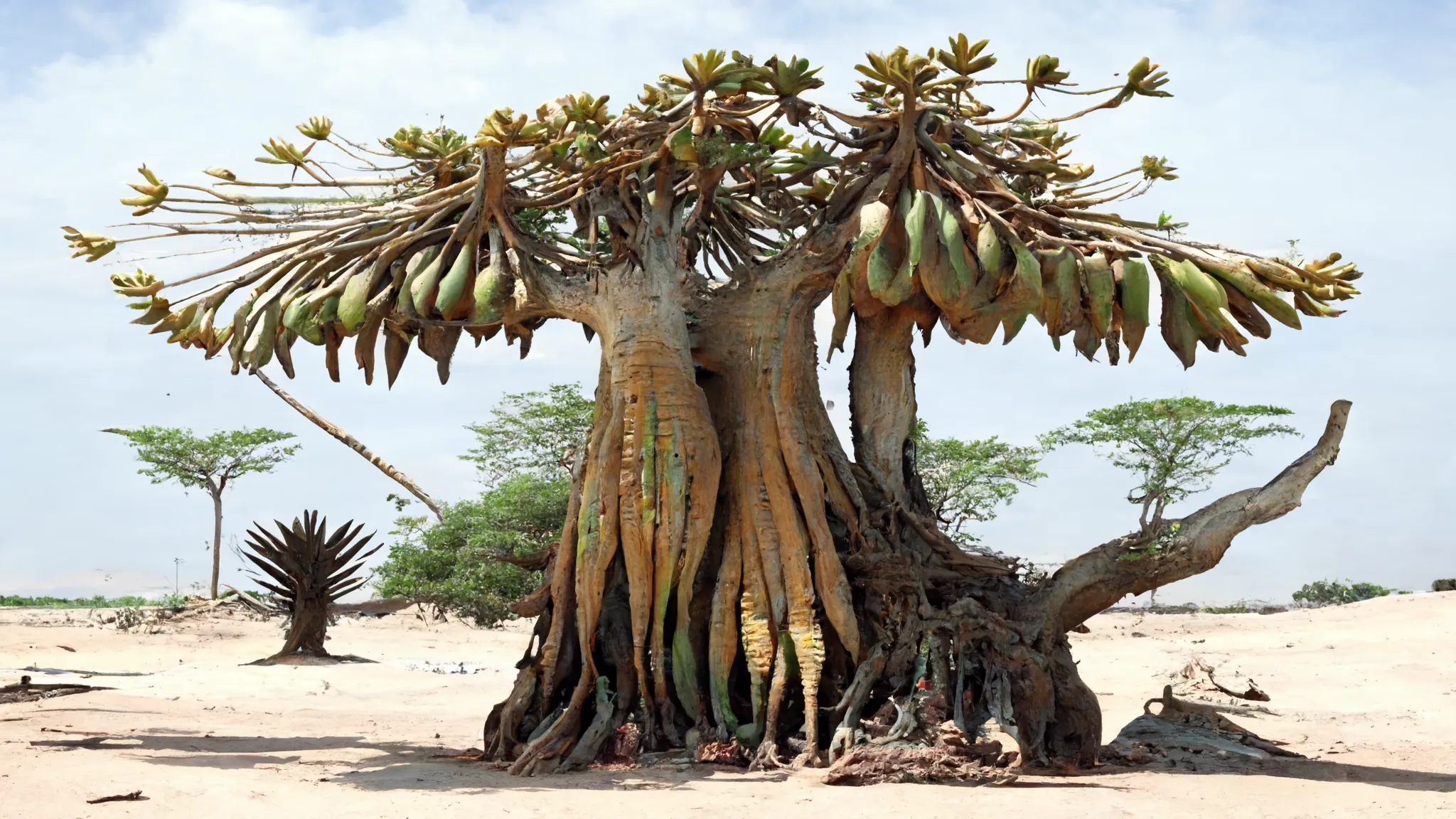





















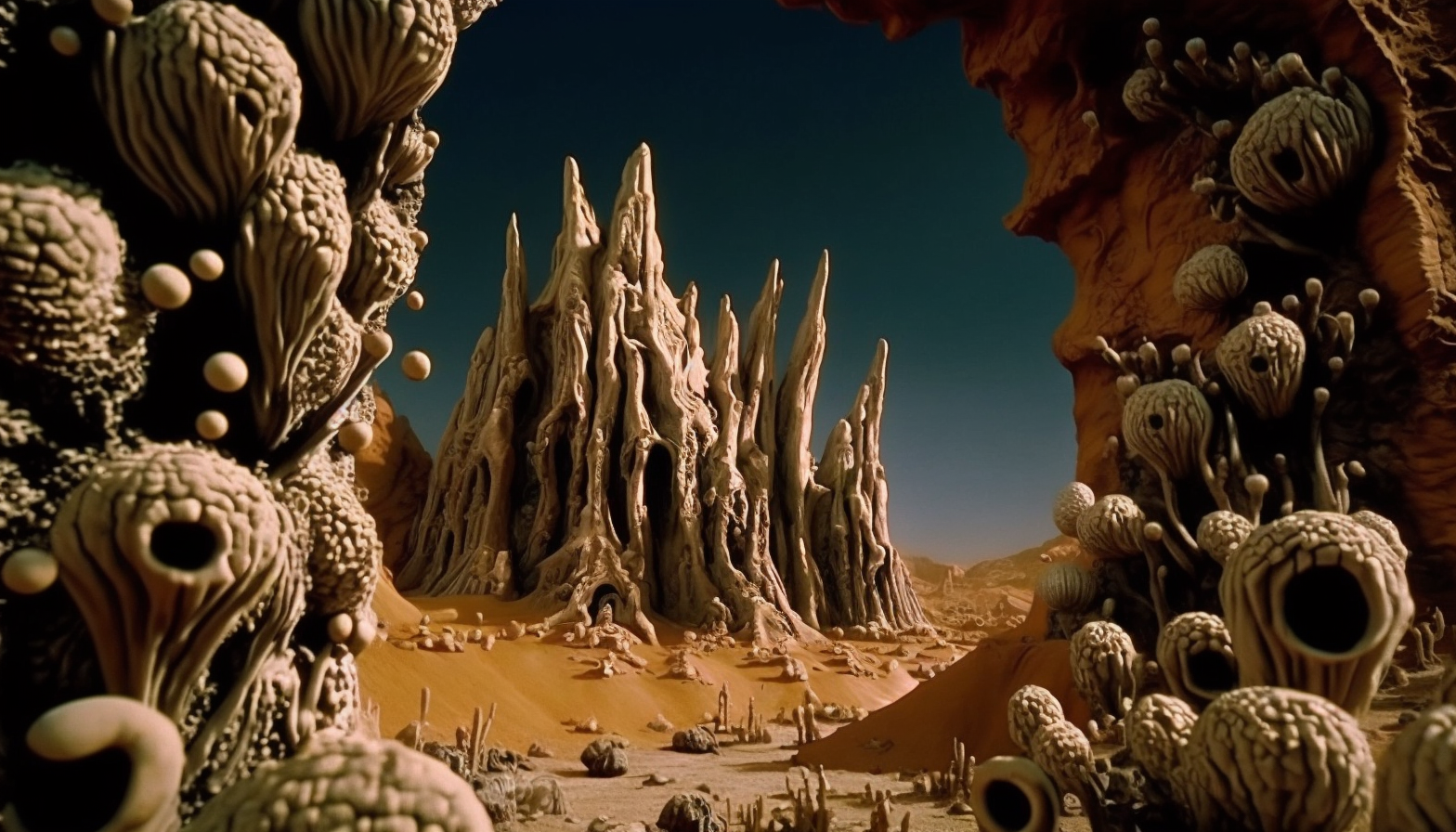














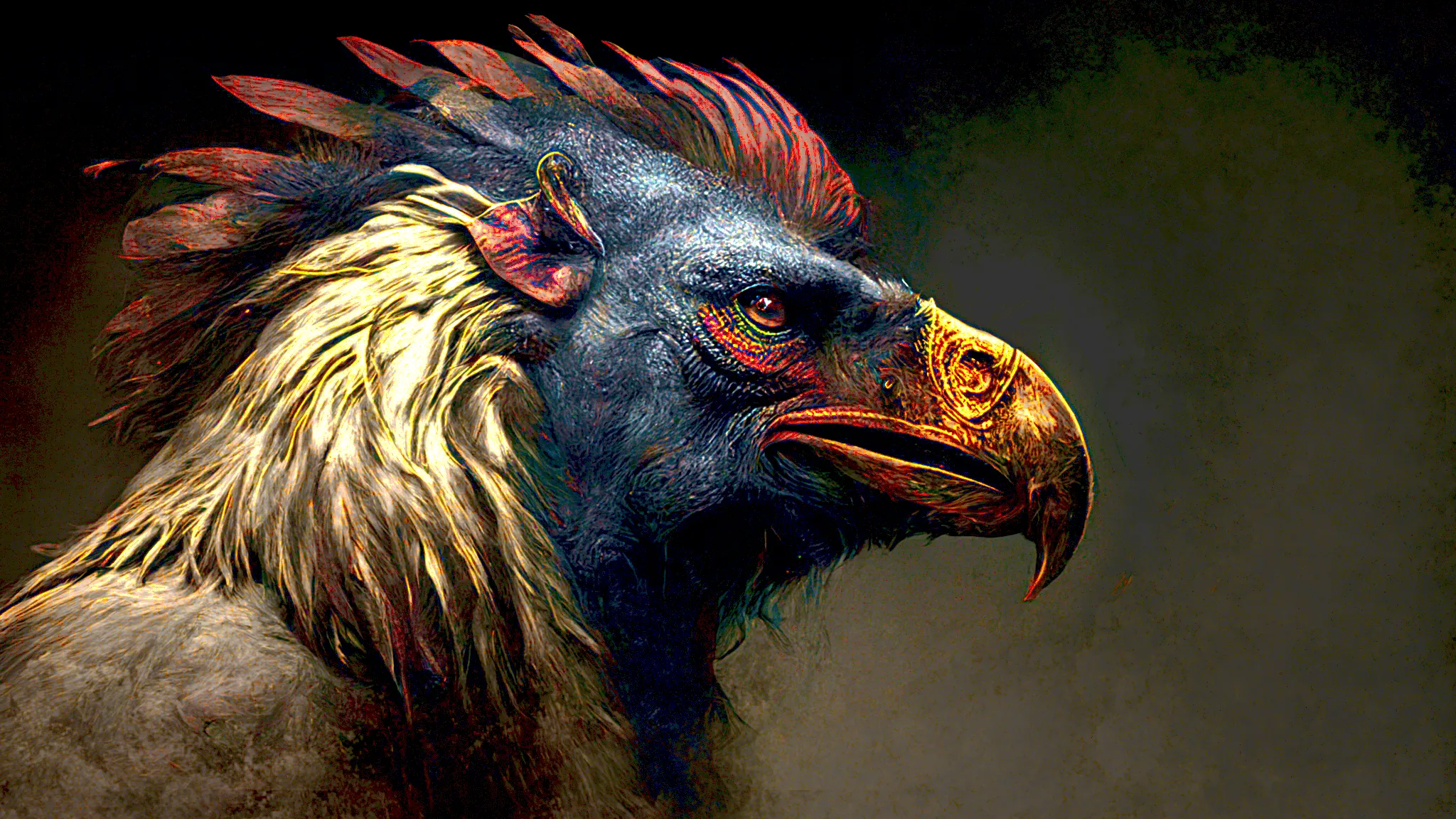




















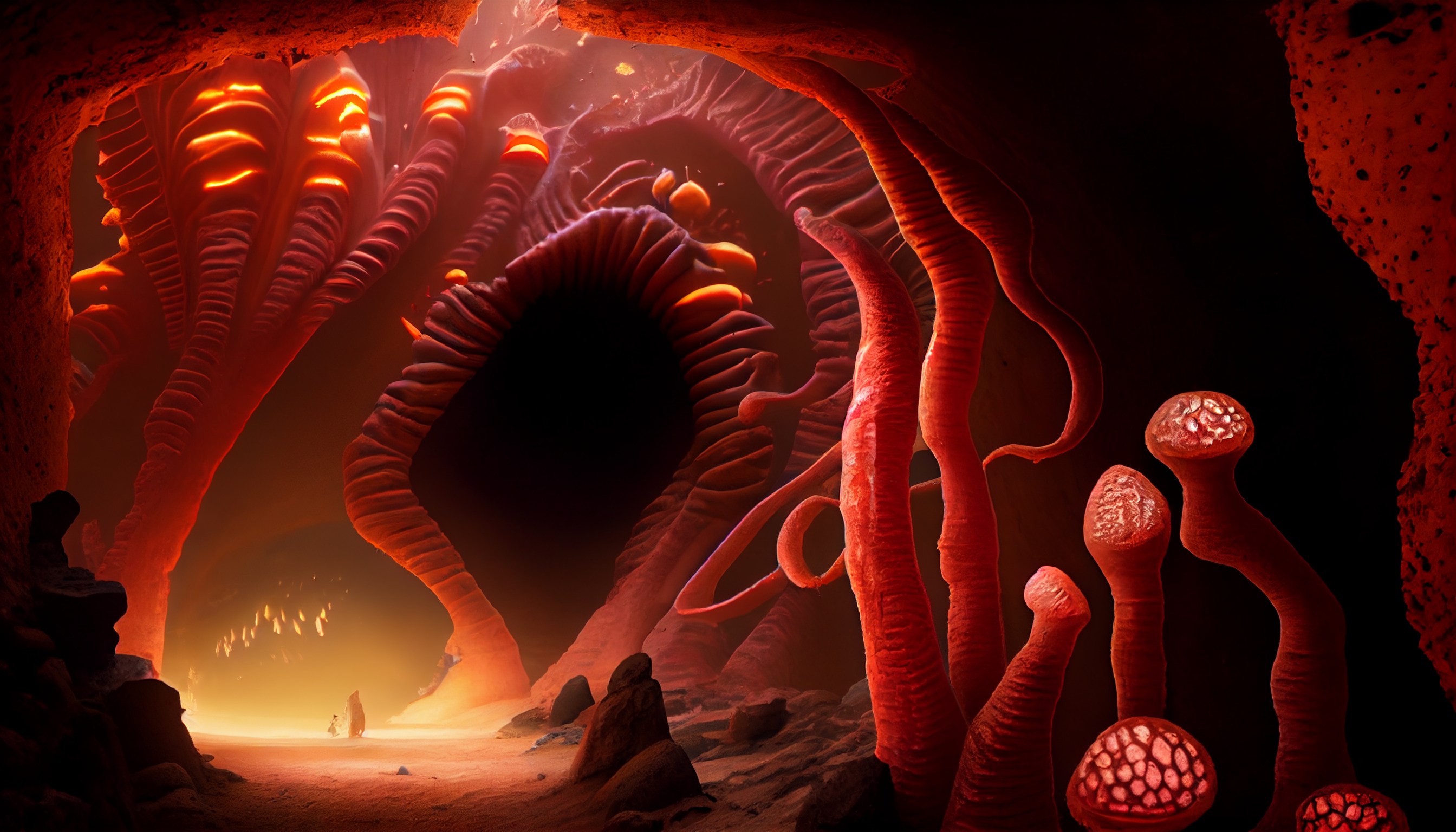


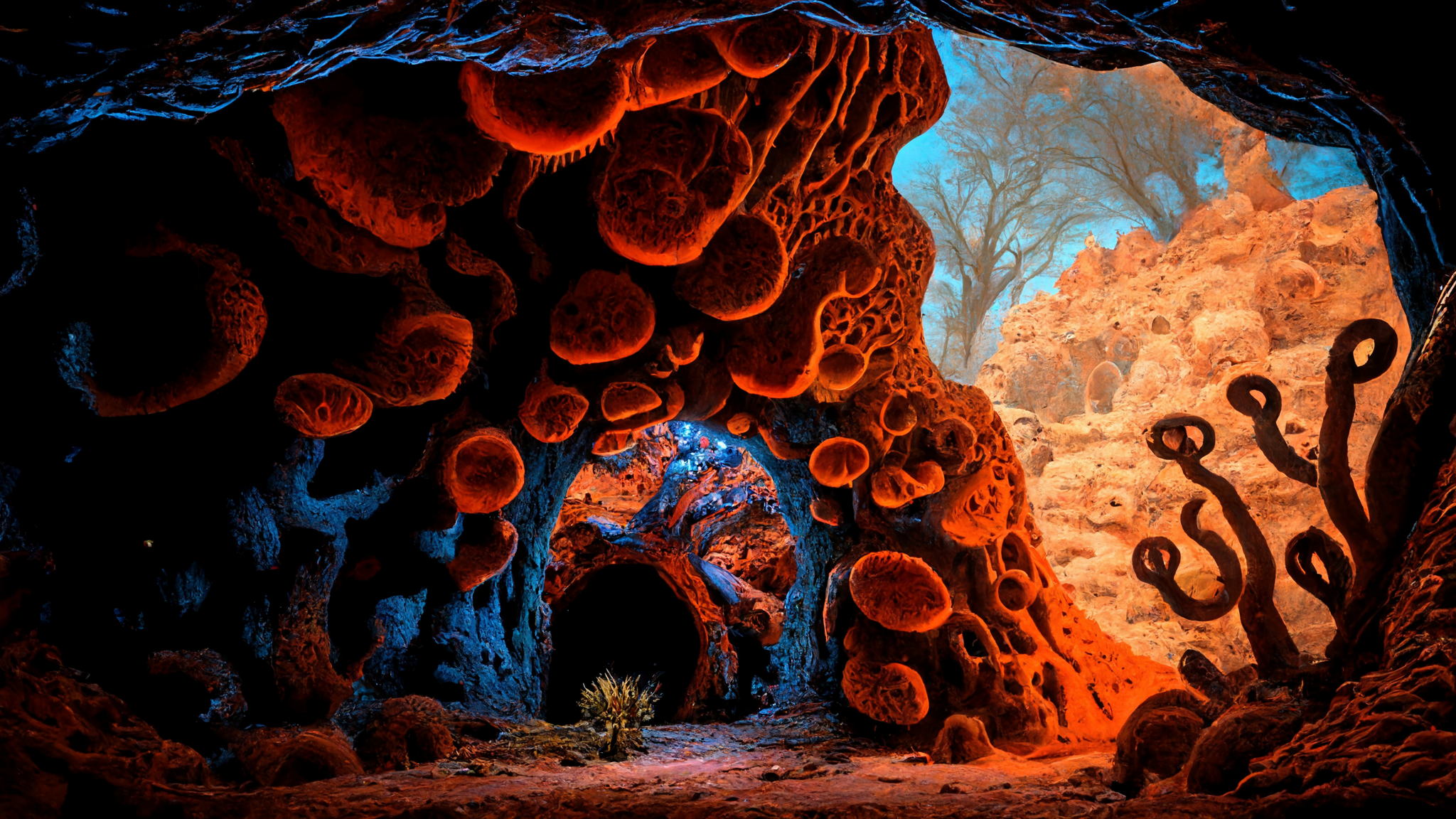




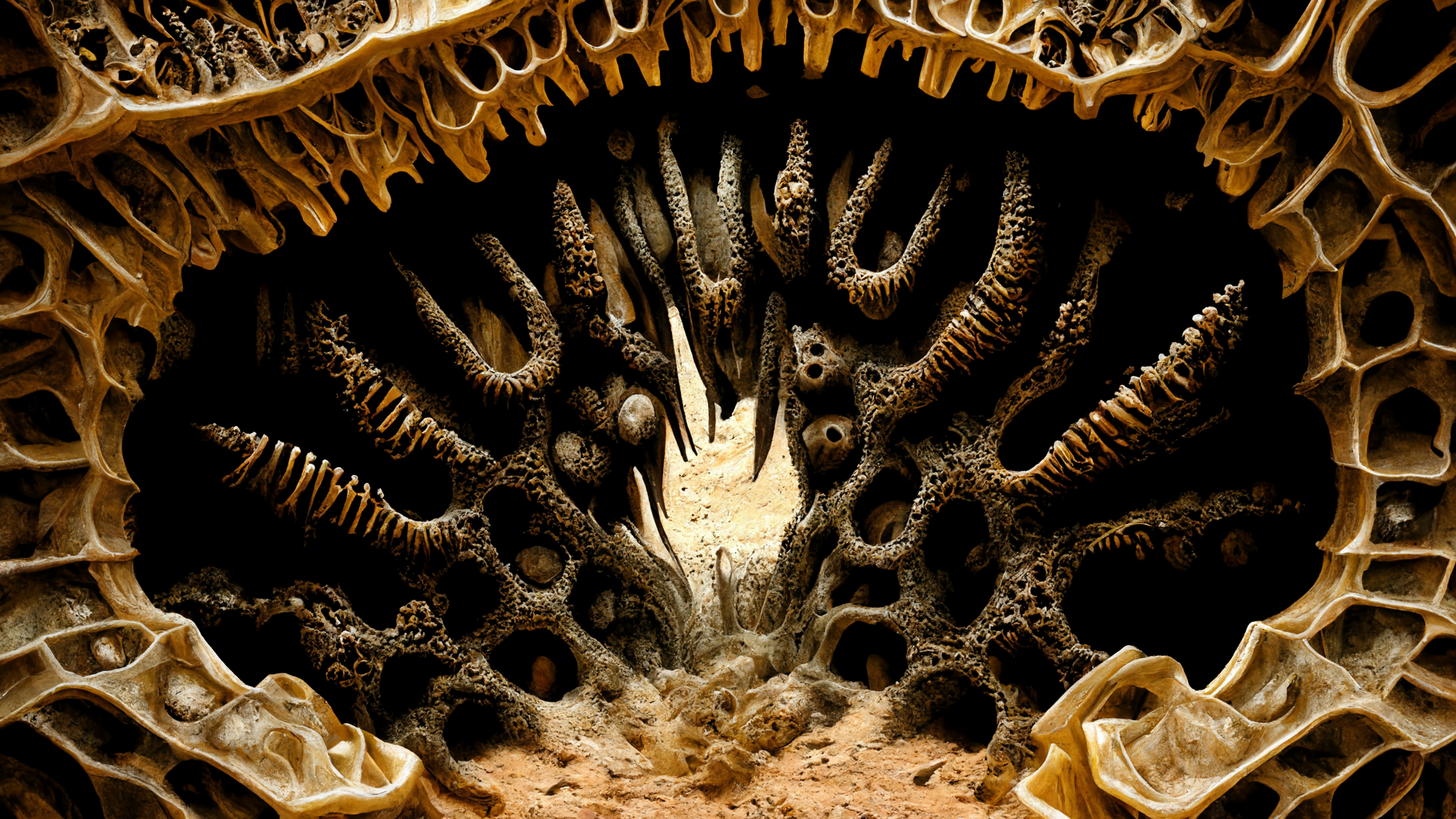


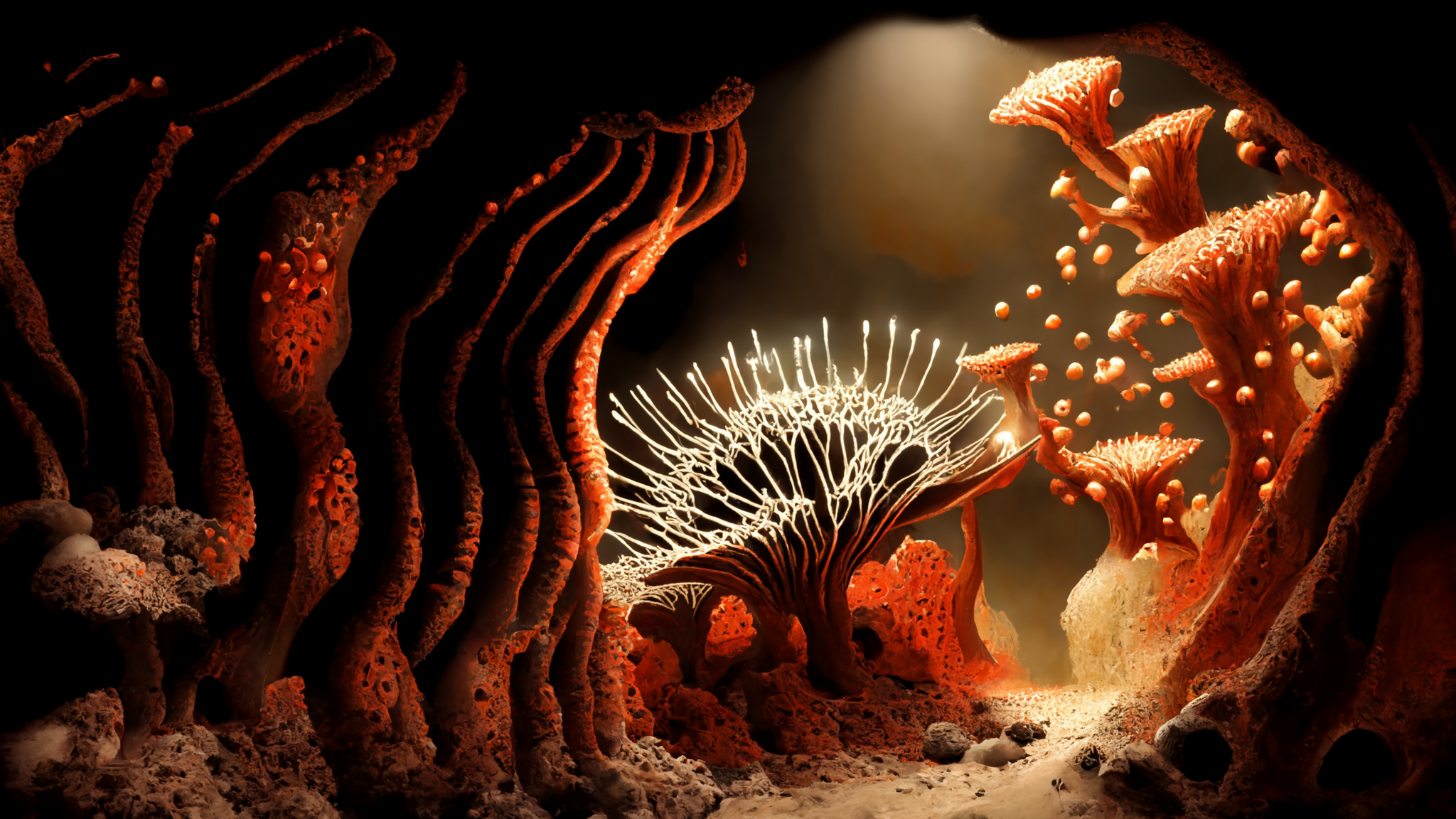

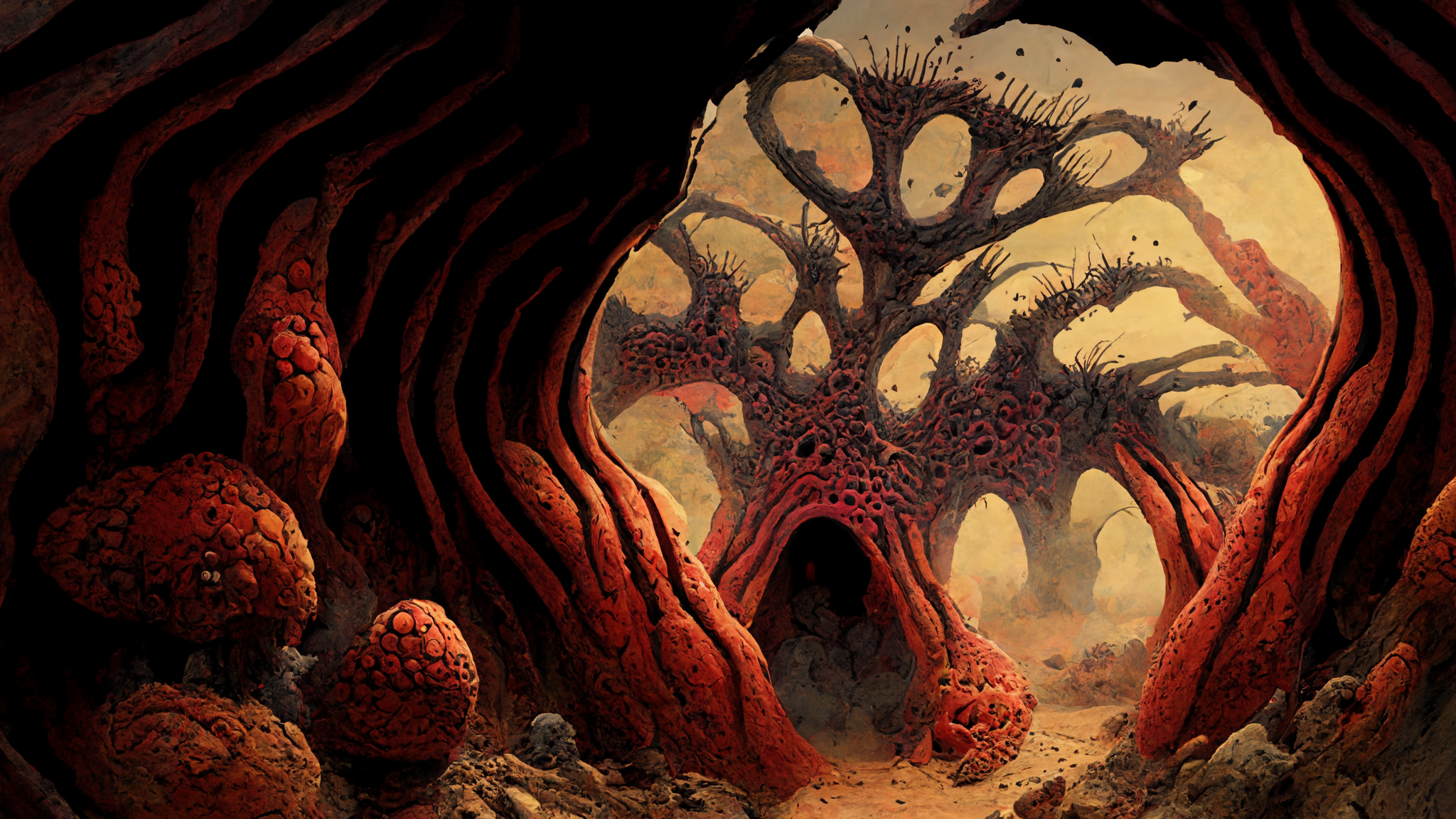























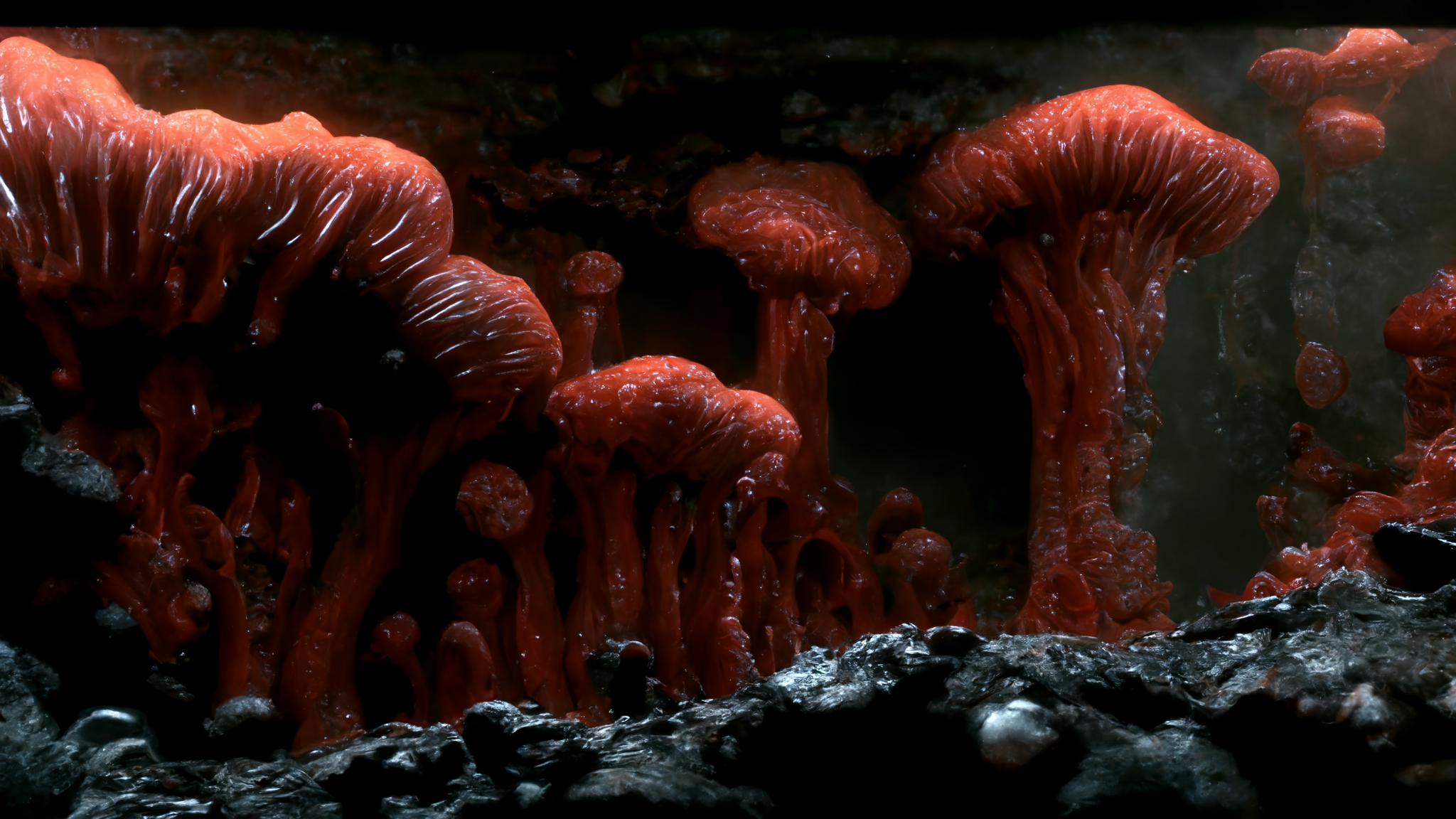





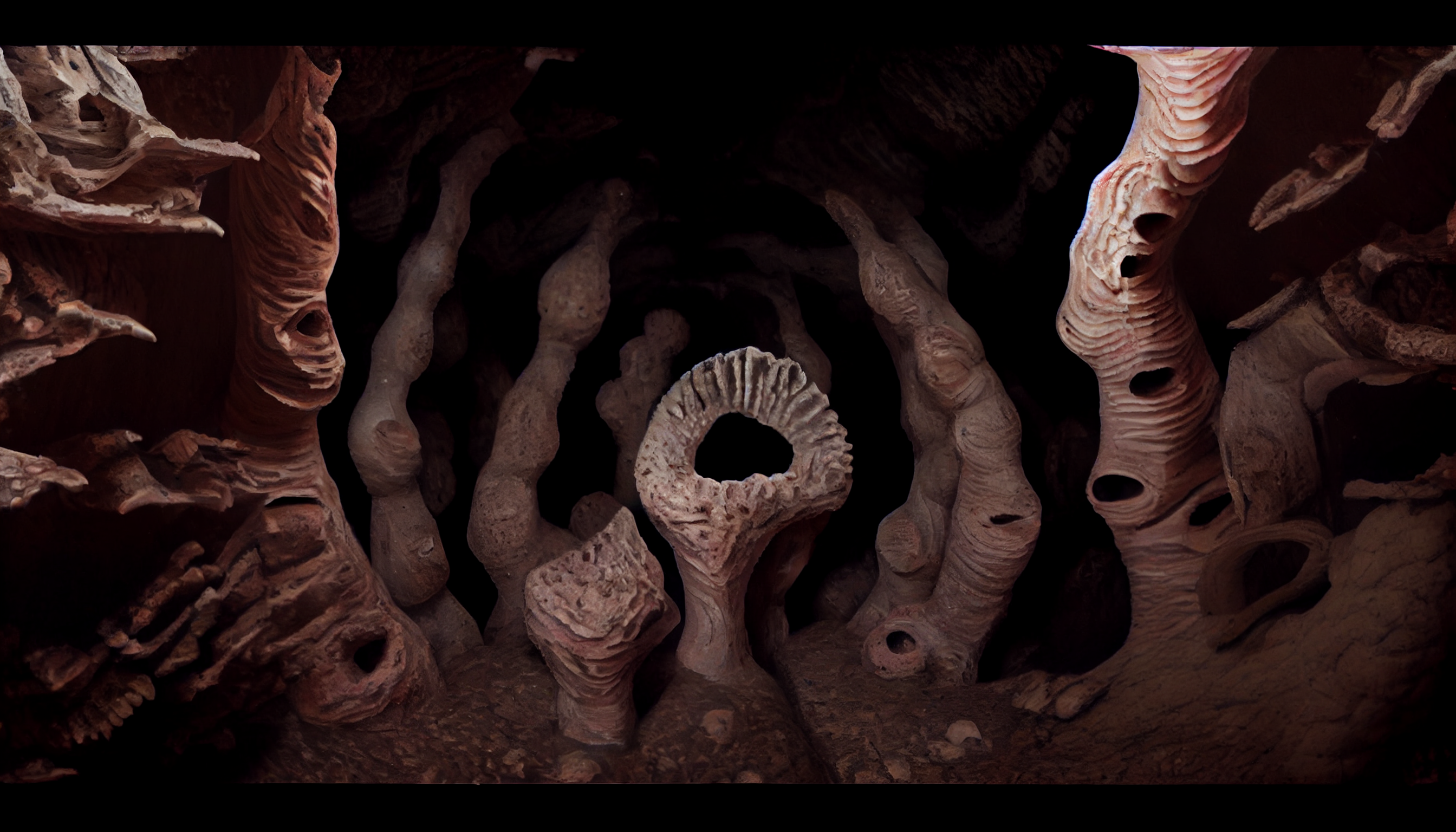










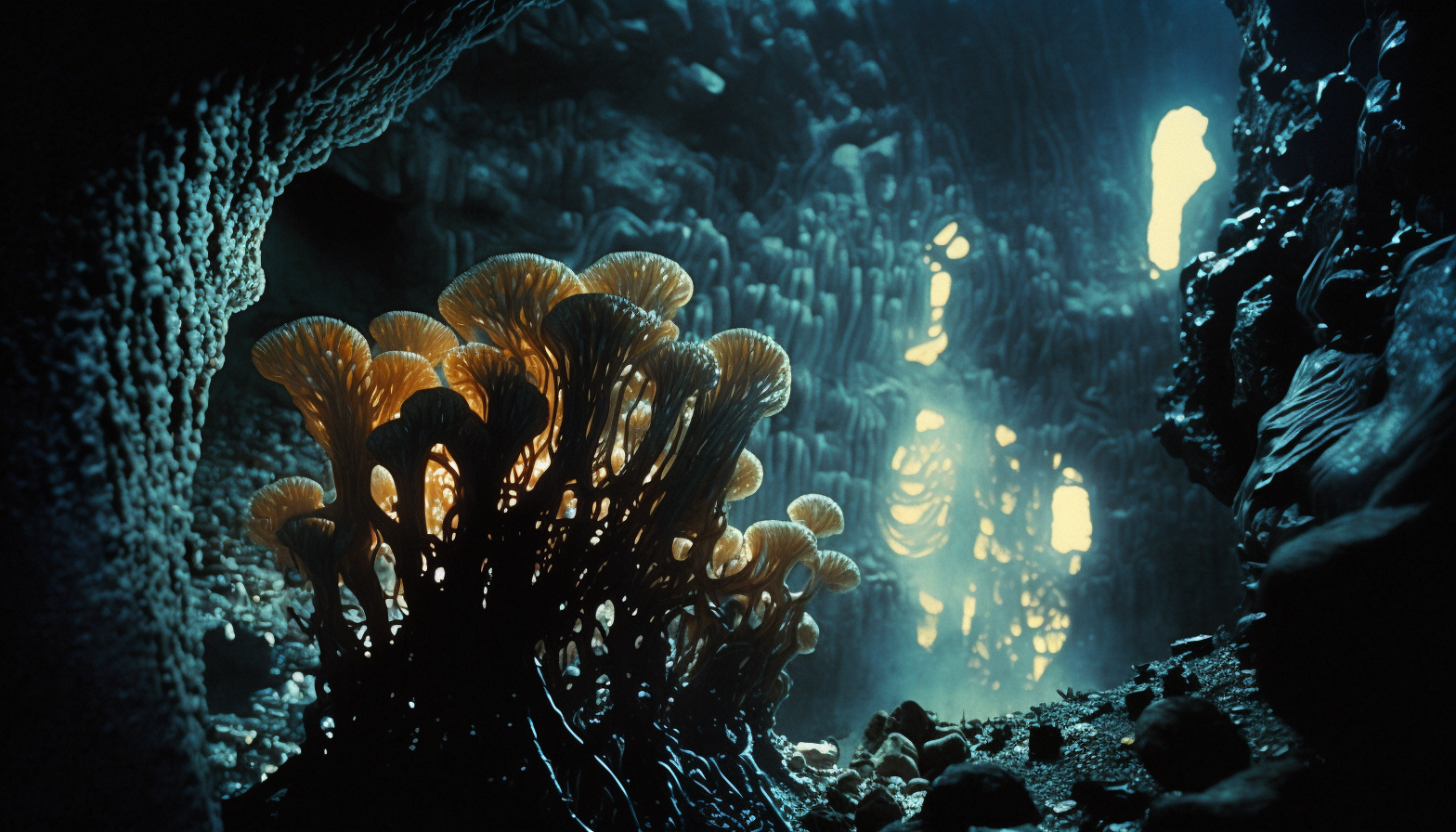



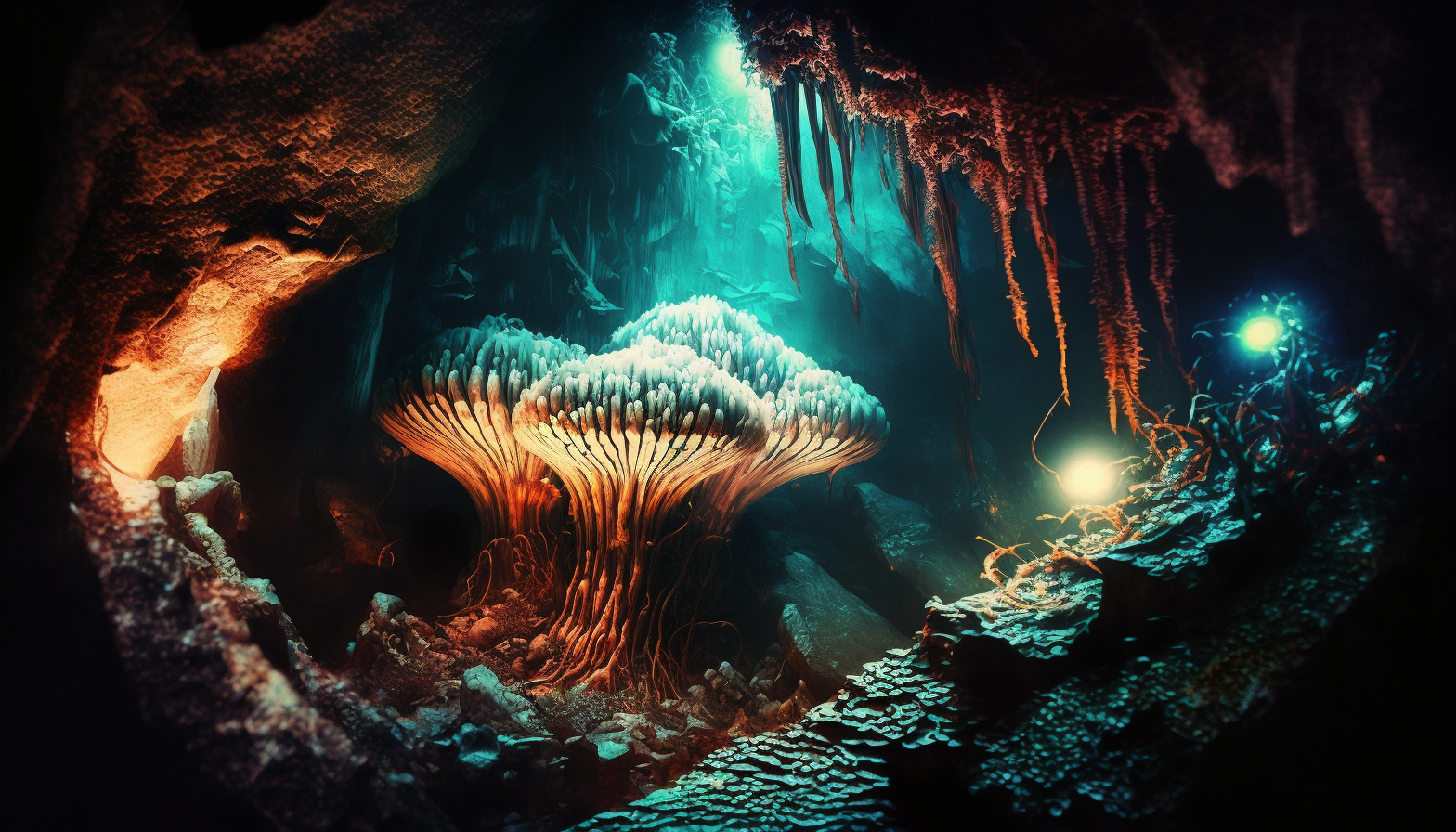




















_result.webp)

_result.webp)
_result.webp)

_result.webp)





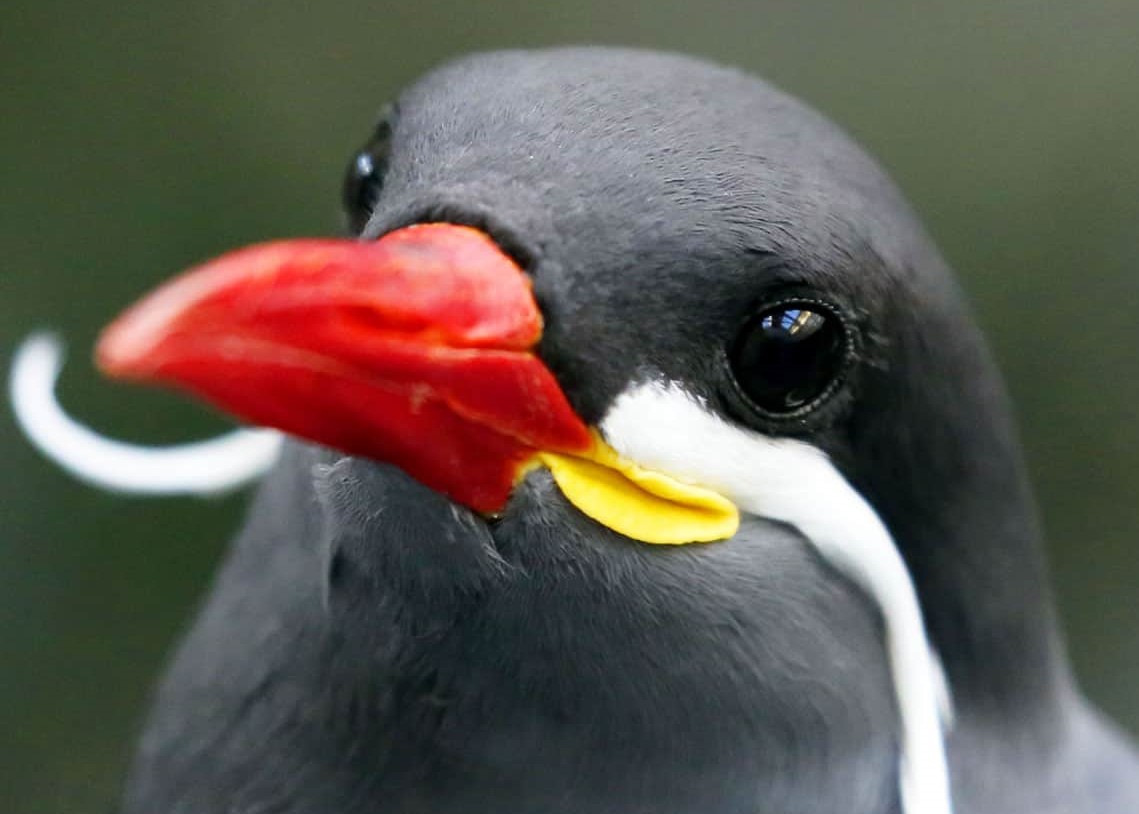





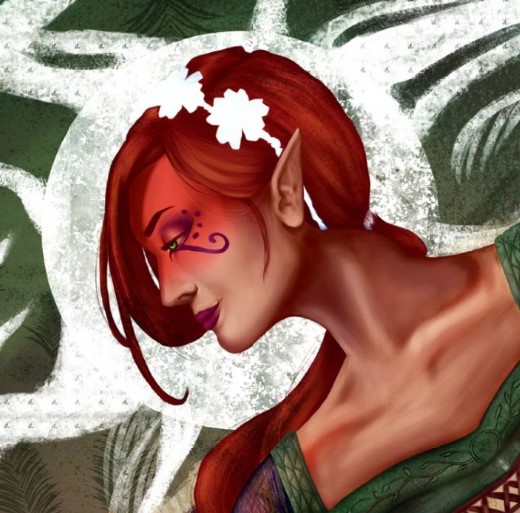




Gorgeous article! It's giving me a lot of ideas for species in my world >:)
Thank you!